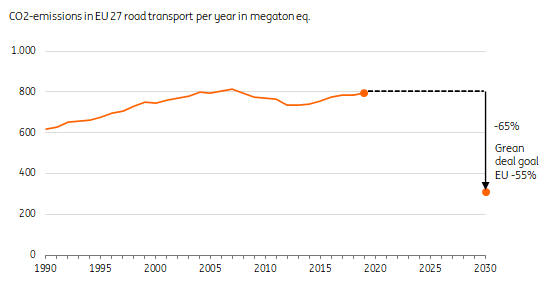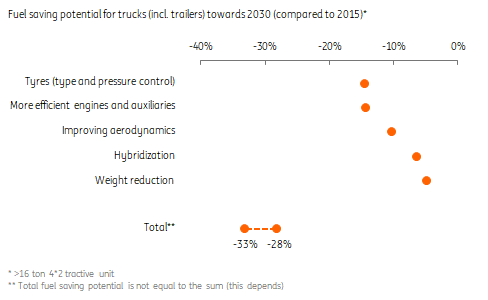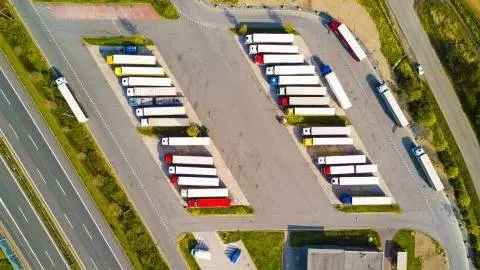Fuel efficiency the first stop in reducing trucking’s footprint
By 2030, the trucking sector has to adapt to even more challenging European CO2 targets. Although zero emission alternatives are not yet viable, businesses can ramp up fuel efficiency now by replacing trucks, making driving more economical, and increasing load factors
CO2 emissions in road transport resumed their way up in recent years
The European road transport sector faces a significant challenge to cut CO2-emissions this decade. Emissions peaked in 2007 and started to decrease thereafter, but they moved higher again in the pre-pandemic years amid increasing transport volumes. Given the increased level of ambition for 2030 under the Green Deal, there’s a long way to go.
Significant CO2 reduction challenge in road transport by 2030

Progression in CO2 reduction will come in two stages (especially in long haul trucking)
Fuel efficiency first - In most cases and for long haul trucking, electric options are not a viable option yet. And replacement of the full fleet will take quite a while. The truck fleet in most European countries has an average age of more than 10 years which means there are still a lot of old generation Euro 0-V trucks running (built before 2013). At the same time, newly-introduced diesel trucks have accelerated fuel efficiency over the last few years. These trucks are up to 20% less fuel consuming, according to user experience, and progression still continues. The new generation DAF-trucks – for instance - lengthen the tractor to optimise aerodynamics which should improve fuel efficiency compared to the previous ‘model 2017’ by some 10%. With an average fuel bill of 25-30% and small margins, every single percentage makes sense and consuming and emitting less also creates a win-win. There are three pathways to cutting emissions with conventional trucks:
- (Faster) replacement is one way of saving fuel and reducing the footprint of road haulage. Reducing the average fleet age helps.
- Smarter driving via coaching and gamefication (per driver fuel consumption can vary no less than 25%)
- Optimisation of logistics planning (‘kill empty running’)
Electrification when possible and viable - By 2030, we expect new truck sales to start shifting towards electric propulsion, either by battery or fuel cell. And synthetic fuel also remains an option. Truck manufacturers are being forced to start building zero emission vehicles in serial production as well to meet European CO2-reduction targets for manufacturers. When the EU agrees to extend the emission transfer system (ETS) to road transport, a system of CO2-charging will in fact be introduced. In Germany, this has already been implemented on a national basis.
More efficient engine technology and tyres offer most savings potential

This publication has been prepared by ING solely for information purposes irrespective of a particular user's means, financial situation or investment objectives. The information does not constitute investment recommendation, and nor is it investment, legal or tax advice or an offer or solicitation to purchase or sell any financial instrument. Read more
Download
Download article
1 July 2021
Truck and trailer markets benefit from soft landing in road transport This bundle contains 3 Articles